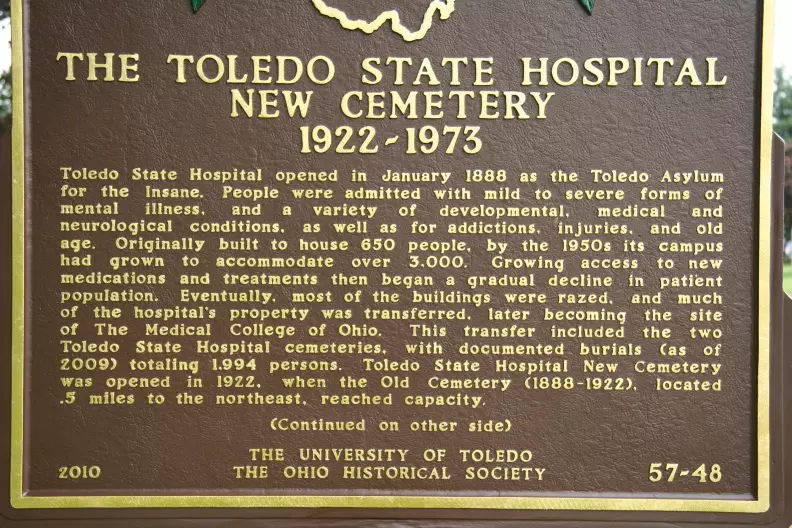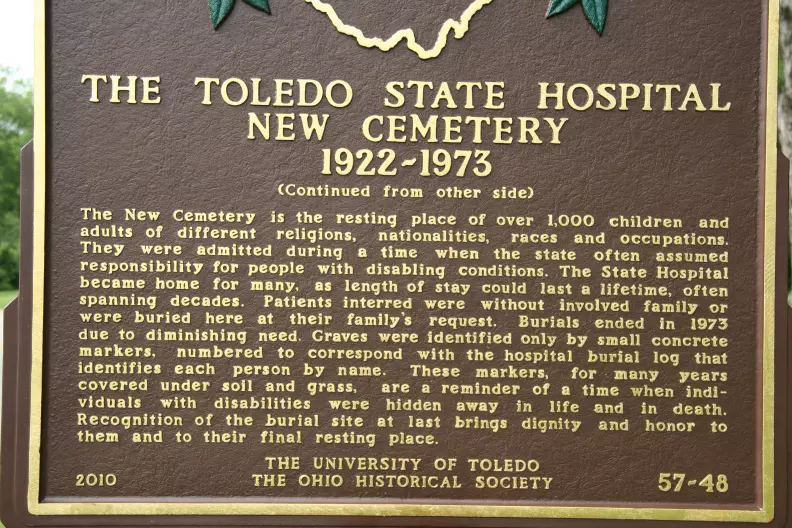The Toledo State Hospital New Cemetery, 1922-1937 (57-48)
Location: Arlington Avenue, Toledo Ohio, east of Bowsher High School. [Google Street View]
Text, Side A: Toledo State Hospital opened in January 1888 as the Toledo Asylum for the Insane. People were admitted with mild to severe forms of mental illness, and a variety of developmental, medical and neurological conditions, as well as for addictions, injuries, and old age. Originally built to house 650 people, by the 1950s its campus had grown to accommodate over 3,000. Growing access to new medications and treatments then began a gradual decline in patient population. Eventually, most of the buildings were razed, and much of the hospital's property was transferred, later becoming the site of The Medical College of Ohio. This transfer included the two Toledo State Hospital cemeteries, with documented burials (as of 2009) totaling 1,994 persons. Toledo State Hospital New Cemetery was opened in 1922, when the Old Cemetery (1888-1922), located .5 miles to the northeast, reached capacity.
Text: The New Cemetery is the resting place of over 1,000 children and adults of different religions, nationalities, races and occupations. They were admitted during a time when the state often assumed responsibility for people with disabling conditions. The State Hospital became home for many, as length of stay could last a lifetime, often spanning decades. Patients interred were without involved family or were buried here at their family's request. Burials ended in 1973 due to diminishing need. Graves were identified only by small concrete markers, numbered to correspond with the hospital burial log that identifies each person by name. These markers, for many years covered under soil and grass, are a reminder of a time when individuals with disabilities were hidden away in life and in death. Recognition of the burial site at last brings dignity and honor to them and to their final resting place.


